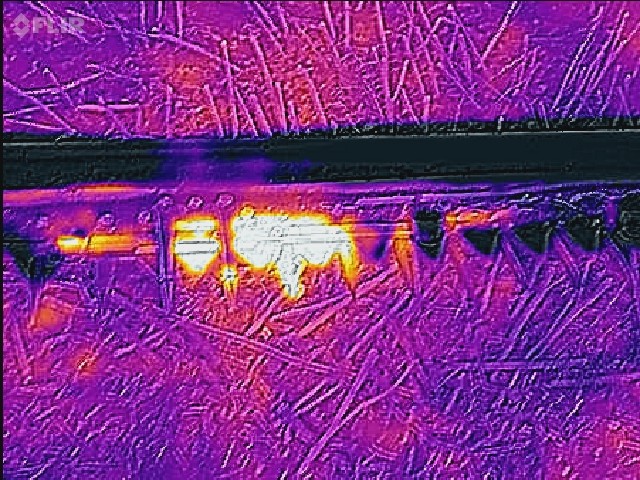The first sections of radiant heaters typically are "anodized" with shiny metal to supposedly increase radiation of the heat from the hottest section closest to the burner. I t would be interesting to see if that section is all showing warmer on thermal imaging than any of what should be cooler sections.
Its also possible that thicker sheets could retain more heat than thin sheets after they have reached an equilibrium temperature; that is if the thin sheets cool the nearby grain columnn.
Just thinking out loud, but maybe its the surface coating and its "reflective" or transmissive properties in the infrared wavelengths which are probably what thermal imaging instruments are sensitive to. But there probably isn't much doubt that on that first test bin all the sheets should be the same thickness and surface finish. Come to think of it; why can you see the "Butler " logo at the top of the bin on a thermal image.
That pretty well proves that even paint on that stencil affects what the thermal image camera reports as temperature. Very interesting? What does the back side of the bin look like on camera.?
Probably need the specs and properties of the sensors in the "camera" before jumping to final conclusions
Its also possible that thicker sheets could retain more heat than thin sheets after they have reached an equilibrium temperature; that is if the thin sheets cool the nearby grain columnn.
Just thinking out loud, but maybe its the surface coating and its "reflective" or transmissive properties in the infrared wavelengths which are probably what thermal imaging instruments are sensitive to. But there probably isn't much doubt that on that first test bin all the sheets should be the same thickness and surface finish. Come to think of it; why can you see the "Butler " logo at the top of the bin on a thermal image.
That pretty well proves that even paint on that stencil affects what the thermal image camera reports as temperature. Very interesting? What does the back side of the bin look like on camera.?
Probably need the specs and properties of the sensors in the "camera" before jumping to final conclusions

Comment